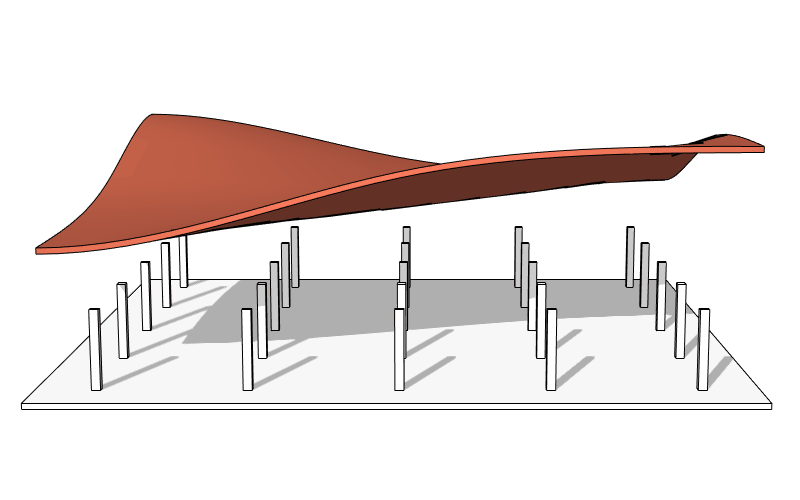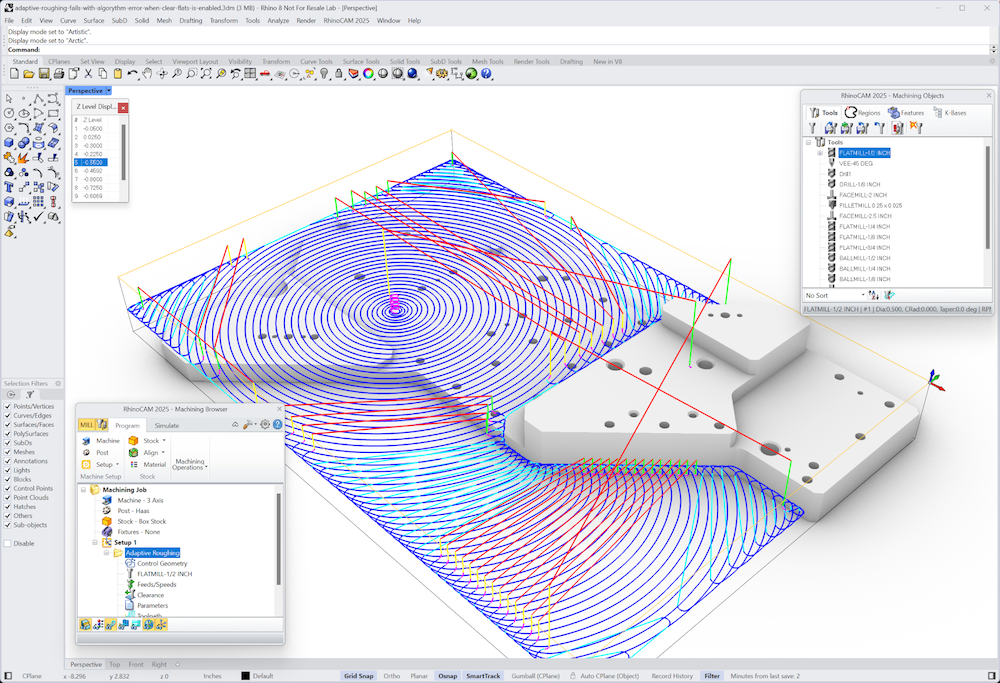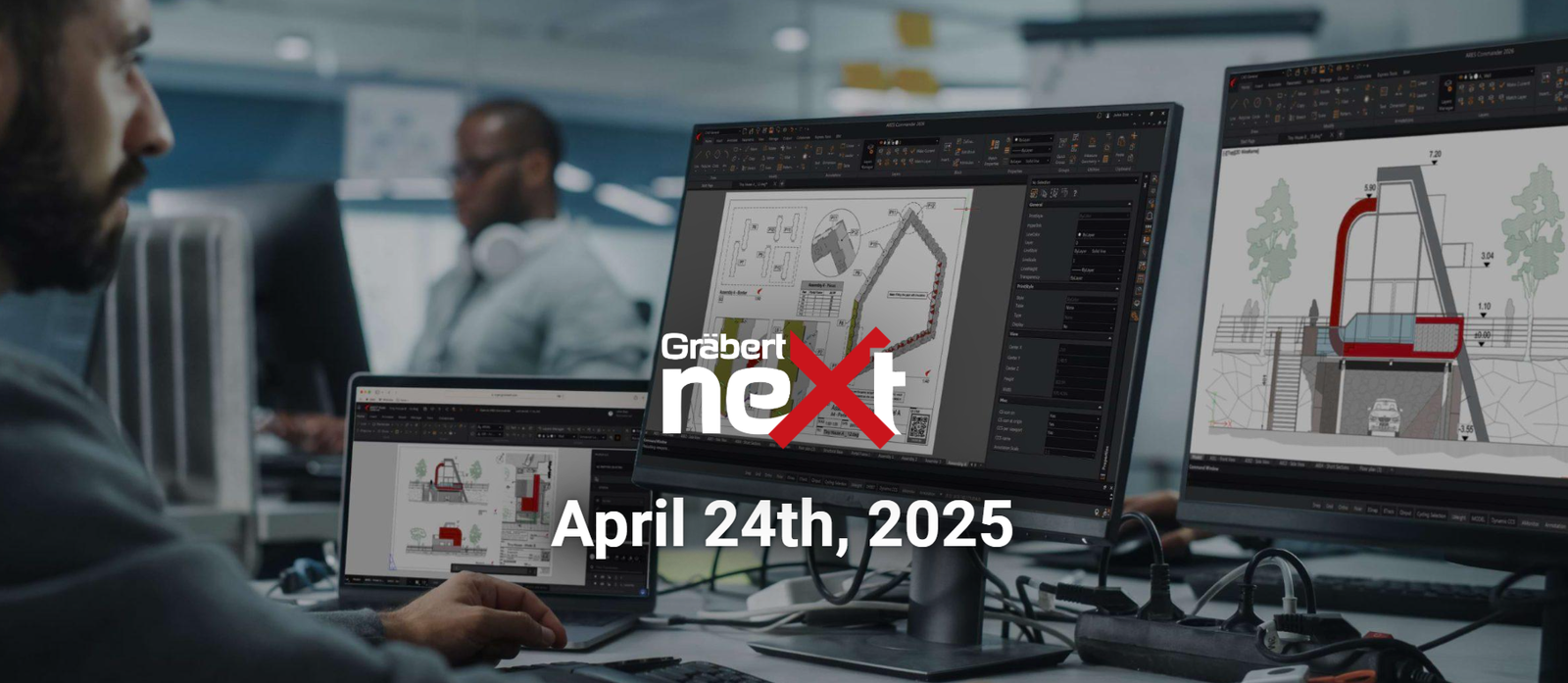Your Cart is Empty
Customer Testimonials
-
"Great customer service. The folks at Novedge were super helpful in navigating a somewhat complicated order including software upgrades and serial numbers in various stages of inactivity. They were friendly and helpful throughout the process.."
Ruben Ruckmark
"Quick & very helpful. We have been using Novedge for years and are very happy with their quick service when we need to make a purchase and excellent support resolving any issues."
Will Woodson
"Scott is the best. He reminds me about subscriptions dates, guides me in the correct direction for updates. He always responds promptly to me. He is literally the reason I continue to work with Novedge and will do so in the future."
Edward Mchugh
"Calvin Lok is “the man”. After my purchase of Sketchup 2021, he called me and provided step-by-step instructions to ease me through difficulties I was having with the setup of my new software."
Mike Borzage
Interview with Kenneth Wong, CAD Journalist and Blogger
August 03, 2009 5 min read

When I first met Kenneth Wong here in San Francisco my thoughts were not focused on the missing aureola of acronyms that impeccably decorates all his pictures. While shacking his hand I was repeating to myself: "I'm meeting one of the last CAD journalists, a very endangered species. I don't know if I'll ever meet another one before they all go extinct." In the past few years we have been so busy exploring the benefits of blogs, Twitter, and Facebook that we have almost completely missed the gradual extinction of CAD journalists and magazines (thanks to Al Dean there is at least one exception). Now it's time to look at the CAD press not anymore as a legacy of the past, but as a component of the new CAD ecosystem. Following Kenneth Wong and the emerging generation of CAD journalists we are witnessing a transformation process that will make the new press a critical player in the way we produce and consume technical information. Here is Kenneth's interview.
Kenneth can you tell us a bit about yourself and your professional activities?
when I’m looking for stories, I pay attention to not just the technological angle but also the human angle
Nearly a decade ago, in one of my temp jobs, I ended up as a receptionist for a publishing firm in San Francisco. It was the same firm responsible for producing Cadence magazine (no longer in existence). The magazine’s editor in chief, Arnie Williams, noted I had a flair for writing and a curiosity about technology. So he hired me as a junior editor. That was my introduction to CAD. Since then, I’ve also cycled through a number of computer games and digital video magazines as an editor. At the moment, I’m Desktop Engineering’s resident MCAD writer and blogger. My writings also appear in Architecture Week, Computer Graphics World, Cadalyst, and other outlets.
Unlike many of my colleagues, I studied literature in school, not engineering. So when I’m looking for stories, I pay attention to not just the technological angle but also the human angle. I’m a first-generation immigrant, born and raised in Burma, Southeast Asia.
You have been working in the CAD field as a journalist for some time. Can this market support a magazine and a team of independent journalists, or will we have to rely on bloggers and press releases in the future?
Instead of magazines, we now have brands: Desktop Engineering, Cadalyst, Manufacturing Business Technology, to name but a few
We used to think of a magazine as a book published monthly. But in the past decade, that model has changed considerably. Instead of magazines, we now have brands: Desktop Engineering, Cadalyst, Manufacturing Business Technology, to name but a few. They’re made up of printed issues and a slew of properties associated with them, such as newsletters, blogs, webcasts, podcasts, and forums. CAD bloggers like SolidSmacks and Deelip emerged as recognized brands in their own rights because they give compelling reasons for people to rely on their insights and judgments.
This creates new fields and venues. Small businesses that can’t afford to run print ads can now participate online. In the end, we may have fewer printed magazines, but a richer media landscape, supported by a greater number of advertisers. I doubt the day will come when press releases become people’s prime source of news. As we all know, they are anything but independent.
Your style as a journalist is focused on the user's perspective. Can you share with us the process you go through when creating a typical article?
You won’t find a lot of technical details in my writing
When deciding to pursue a story, I always ask, “Would a user care?” You won’t find a lot of technical details in my writing. If I’m writing a feature story on a new product release, I’d rather focus on how easy (or difficult) it is to create dimensions in it than on what the modeling kernel is. I frequently broadcast the topics I’m considering in my Twitter and Faceboook updates, just to get readers’ reaction. I also scan comments on popular CAD blogs to identify people I could interview. On several occasions, I contacted them and asked them to provide quotes for my stories. In Desktop Engineering’s Virtual Desktop newsletter, which I’m responsible for, I regularly feature “Tweet of the month” and “Reader comment of the month,” culled from what readers have to say about certain topics. I think their opinion matters just as much as mine.
For several years, pervasive use of 3D in browsers has been perceived by many as the next big thing. But it hasn't happened, or at least not on a popular scale. What are the reasons for this delay?
The mouse-and-keyboard combo is perfectly suited for text input, but a handicap for manipulating 3D
Partly, it has to do with how we interact with computers. The mouse-and-keyboard combo is perfectly suited for text input, but a handicap for manipulating 3D. The other factor is the lack of standard for repackaging 3D CAD data for the Web. I’m hoping Google’s O3D open API (http://code.google.com/apis/o3d/) will serve as a rallying call for this cause. By the way, online games and virtual communities like World of Warcraft and Second Life are doing a good job cultivating a groundswell for browser-based 3D. Online communities like Dassault’s 3DVIA and 3D ContentCentral represent similar efforts. I think light-hearted, consumer-friendly Web 3D will pave the way for the more serious implementations to come.
How does your approach differ when writing an article compared to writing a blog post?
I see blogging as a way to connect with the readers on a more personal level
In my news articles, I seldom use the first-person voice. I usually keep the “I” out of the text and simply report the facts. In blog posts, my thoughts, my reactions, and my quirky personality are as much a part of the story as the facts. I take that approach because I see blogging as a way to connect with the readers on a more personal level.
Silicon Valley venture capitalists seem to be attracted to all sort of technologies except CAD and 3D technologies (with very few exceptions). As a CAD expert and resident of the Bay Area and Silicon Valley region do you have an explanation for this?
CAD market is growing […] without the kind of wild swings that give VCs an adrenaline rush
I’m no expert on venture capitalists (VCs), but they seem to be dictated by hype, buzz, rumors, and market volatility. CAD market is growing (as seen in CIMdata’s annual reports), but it’s a safe, steady market without the kind of wild swings that give VCs an adrenaline rush. I think VCs who’re in it for the long haul should consider CAD.
What should CAD bloggers learn from CAD journalists and what should CAD journalists learn from CAD bloggers?
bloggers have shown us that, in the new era, a story is on ongoing dialog
CAD bloggers stand to gain a lot of credibility by adopting some traditional journalistic practices, like taking the time to fact-check before posting something, citing respected sources and statistics to reinforce their points, and balancing a story with opposing viewpoints. Journalists should learn to blog and use social media (Facebook, Twitter, and YouTube, for example) to engage with their readers the way bloggers do. Traditionally, journalists think of a story as an essay or a speech. Bloggers have shown us that, in the new era, a story is on ongoing dialog. So let’s talk!
I would like to thank Kenneth for taking the time to answer my questions. If you have any questions for Kenneth or for Novedge, please leave a comment below and we will be glad to answer.
Franco Folini
Kenneth's Virtual Desktop Video Edition To view all issues of Kenneth Wong
Virtual Desktop Video Edition visit DE Channel on youTube.
Also in NOVEDGE Blog

Enhance Your Designs with VisualARQ 3: Effortless Geometry Extensions for Walls and Columns
April 30, 2025 8 min read
Read More
MecSoft Unveils RhinoCAM 2025 and VisualCAD/CAM 2025 with Enhanced Features
March 08, 2025 5 min read
Read MoreSubscribe
Sign up to get the latest on sales, new releases and more …



